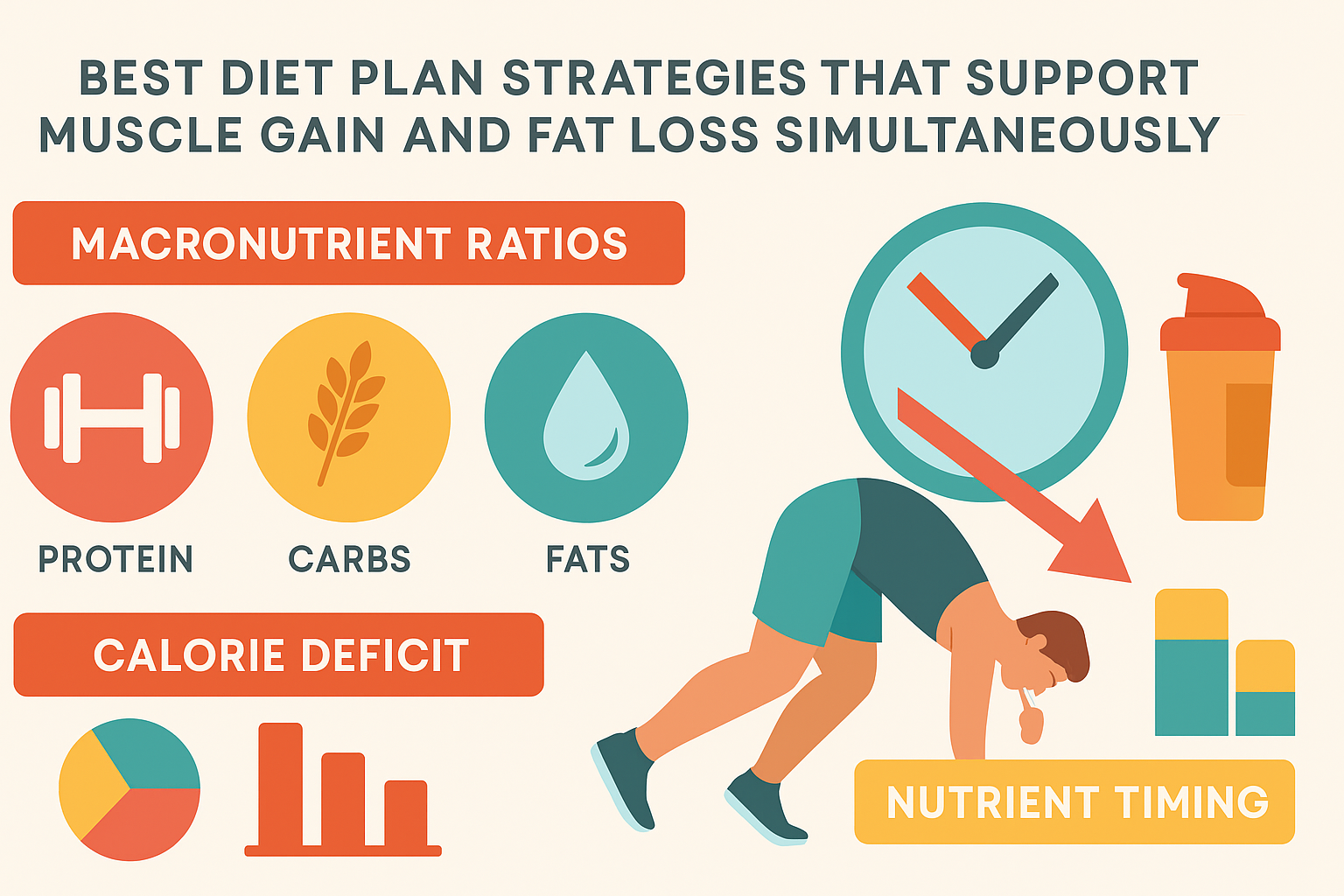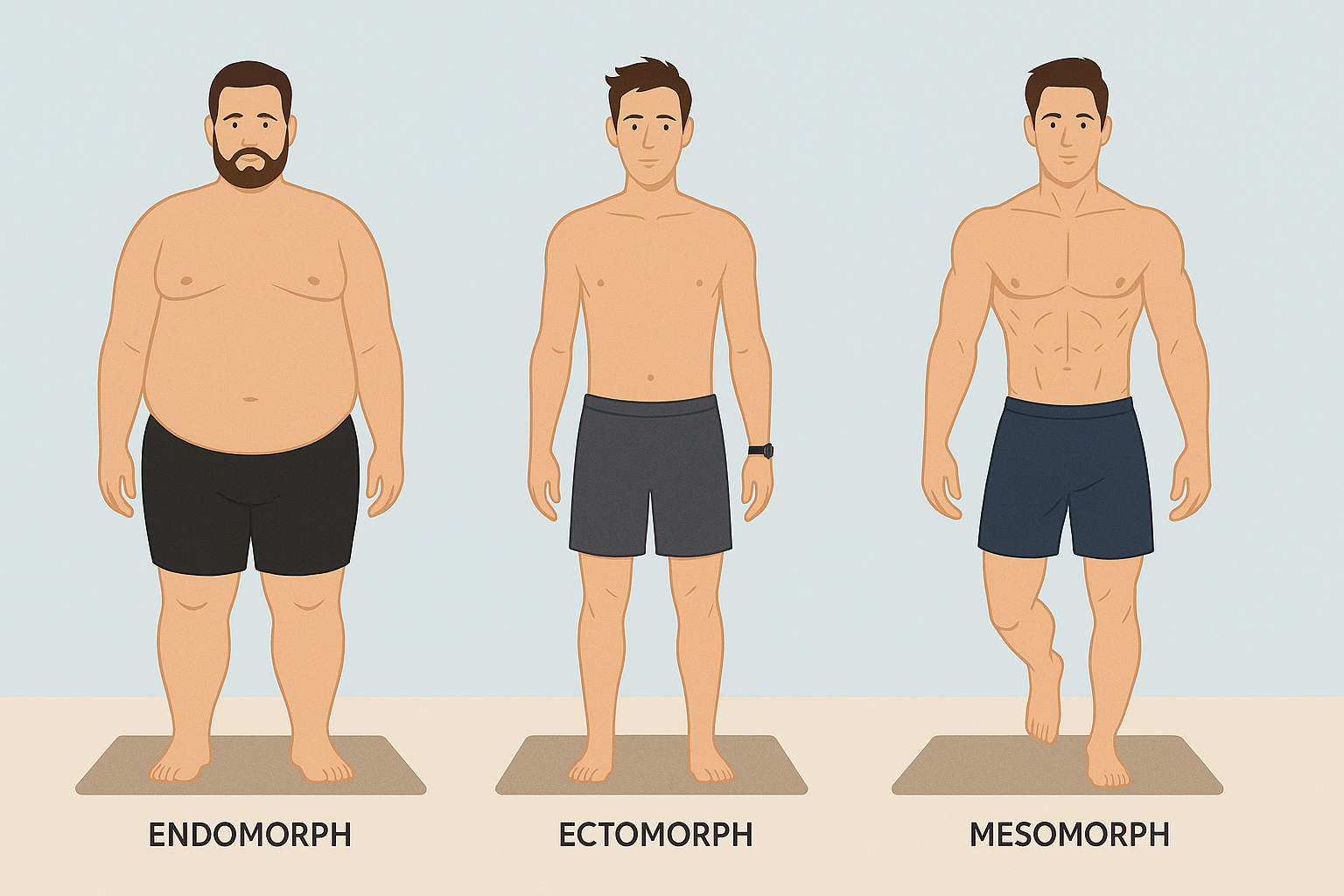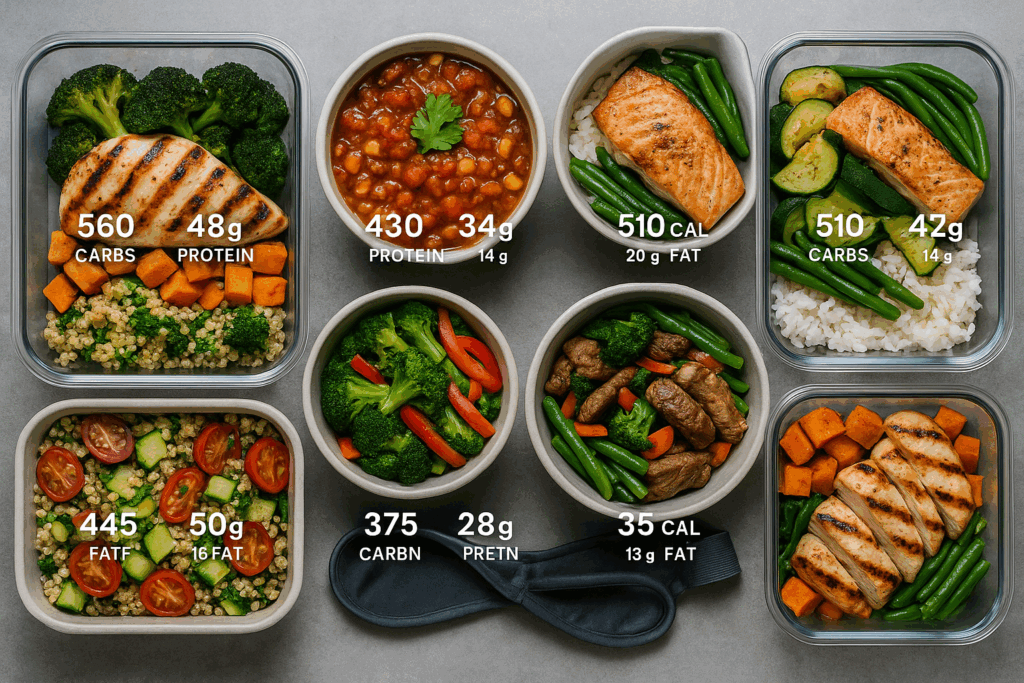Introduction: Redefining Weight Loss Through Strength
When it comes to fitness, men often find themselves pulled in different directions by conflicting goals. On one hand, there’s the desire to build muscle mass and increase strength. On the other, there’s the need to reduce body fat and improve overall health. Many conventional solutions focus solely on cardio-based routines and restrictive diets, yet overlook the tremendous value of strength training. However, strength-based weight loss programs for men offer a transformative alternative. These programs don’t just help men burn fat—they build functional power, improve metabolic efficiency, and support long-term body composition changes in a sustainable way.
At their core, strength-based approaches integrate resistance training with smart, balanced nutrition. Instead of asking men to sacrifice muscle in pursuit of the scale, they prioritize metabolic health and lean mass preservation. This comprehensive strategy aligns closely with research demonstrating that resistance training boosts resting metabolic rate, enhances insulin sensitivity, and accelerates fat oxidation. For men looking to lose weight without compromising strength or energy, this holistic model is not only effective—it is scientifically sound and performance-enhancing.
You may also like: The Ultimate 30-Day Workout Plan for Men Working Out in the Gym: Proven Full Body Strength Exercises to Maximize Results
Why Strength-Based Weight Loss Programs for Men Outperform Traditional Diets
Traditional weight loss programs often rely heavily on caloric restriction and endurance-based cardio. While this approach can yield short-term results, it frequently leads to muscle loss, decreased energy, and long-term weight regain. By contrast, strength-based weight loss programs for men preserve and even build lean muscle tissue while reducing fat. The inclusion of compound lifts like squats, deadlifts, and bench presses stimulates hormonal responses that drive fat loss more efficiently than aerobic activity alone.
One of the primary advantages of these programs is their impact on metabolic rate. Muscle is metabolically active tissue, and increasing lean mass boosts basal metabolic rate—the number of calories burned at rest. This means that even when not exercising, men following a strength-based protocol burn more calories than their cardio-focused counterparts. The result is not just temporary fat loss, but sustained changes in body composition.
Another key benefit is hormonal balance. Strength training elevates testosterone and growth hormone levels, both of which are crucial for fat loss, muscle retention, and overall vitality. These hormones decline with age, contributing to fat gain and muscle loss. By incorporating resistance training, men can mitigate age-related declines and maintain a youthful metabolic profile.

Structuring Effective Weight Loss Programs for Men Around Resistance Training
A well-structured strength-based program begins with progressive overload—a training principle that gradually increases the stress placed on muscles to promote adaptation. For weight loss, this means combining heavy lifting with moderate-volume accessory work that targets all major muscle groups. Programs typically include three to five strength sessions per week, alternating between full-body routines and split workouts that focus on specific regions.
An essential component is the integration of compound movements. Exercises like barbell squats, Romanian deadlifts, overhead presses, and pull-ups engage multiple muscle groups simultaneously, stimulating maximal energy expenditure and muscle recruitment. These exercises also translate well to real-world physical demands, enhancing functional fitness.
Cardio is not excluded but redefined. Instead of long bouts of steady-state running, many strength-based programs incorporate high-intensity interval training (HIIT) or low-intensity steady-state (LISS) cardio on off-days. These sessions improve cardiovascular health and accelerate fat loss without impairing recovery or promoting muscle loss.
Recovery, too, is paramount. Adequate rest, sleep, and active recovery techniques such as foam rolling or light mobility work ensure that the nervous system and musculoskeletal system can adapt and thrive. Skimping on recovery not only hinders progress but increases the risk of overtraining and injury.

Integrating a Healthy Diet Plan into Strength-Based Weight Loss Programs for Men
No weight loss journey is complete without a comprehensive dietary strategy. In strength-based weight loss programs for men, the goal is not starvation but strategic nourishment. The ideal approach emphasizes lean proteins, complex carbohydrates, healthy fats, and micronutrient-rich vegetables. This combination supports muscle repair, energy production, and hormonal health.
Macronutrient ratios often prioritize protein intake, with recommendations ranging from 1.0 to 1.2 grams of protein per pound of body weight. Protein helps preserve lean tissue during caloric deficits and provides satiety, reducing the temptation to overeat. Carbohydrates are periodized around training to fuel workouts and replenish glycogen, while fats support endocrine function and satiety.
Meal timing also plays a role. Consuming a protein-rich meal within 60 minutes post-workout aids recovery and muscle protein synthesis. Additionally, spreading meals evenly throughout the day can stabilize blood sugar and reduce cravings.
Importantly, the best diet plan is one that is sustainable and tailored to individual preferences. Flexibility, variety, and occasional indulgences help ensure long-term adherence. Popular frameworks like intermittent fasting, carb cycling, or Mediterranean-style eating can all be adapted within a strength-based model, provided nutritional needs are met.

Best Diet Plan Strategies That Support Muscle Gain and Fat Loss Simultaneously
Creating a diet that supports both fat loss and muscle gain—often referred to as body recomposition—requires precision. The best diet plan for this goal combines a slight caloric deficit with high protein intake and strategic nutrient timing. This balance ensures that fat stores are tapped for energy while muscle tissue is protected and even enhanced.
One effective method involves calculating maintenance calories and reducing intake by approximately 10-15%, thereby ensuring fat loss without significantly compromising performance. Emphasis on nutrient-dense, whole foods—such as grass-fed meats, fatty fish, legumes, whole grains, and leafy greens—provides a robust foundation of vitamins and minerals essential for recovery and metabolic function.
Another component of the best diet plan is fiber. High-fiber foods such as oats, lentils, and cruciferous vegetables not only support digestive health but also improve satiety and glycemic control. This is critical in avoiding the blood sugar swings that can lead to cravings and overeating.
Supplementation can complement whole food strategies. Creatine monohydrate, omega-3 fatty acids, vitamin D, and whey protein are commonly used in strength-based weight loss programs for men to enhance performance, support joint health, and improve recovery.

Customizing Diet and Exercise Plans for Different Body Types and Goals
Every man brings a unique physiology and lifestyle to his fitness journey. As such, effective diet and exercise plans must account for individual differences in metabolism, genetics, training history, and personal preferences. Customization not only improves results but increases adherence by creating a sense of ownership and relevance.
For endomorphs, who tend to store fat easily and struggle with weight loss, a diet lower in carbohydrates and higher in protein and fat may improve insulin sensitivity and enhance fat metabolism. Exercise plans should prioritize high-volume strength training with supplemental cardio to maximize caloric expenditure.
Ectomorphs, on the other hand, may find it challenging to gain muscle and require higher caloric intakes, particularly from carbohydrates. Their diet plan for men should include calorie-dense, nutrient-rich foods and a focus on compound lifts to stimulate muscle growth. For these individuals, minimizing cardio can help preserve calories for muscle building.
Mesomorphs, typically muscular and athletic, may benefit from a balanced approach that incorporates moderate carbs, proteins, and fats. Their bodies often respond well to resistance training, and they can adapt to various diet programs for men depending on specific goals like cutting, bulking, or maintenance.
By tracking metrics such as body composition, performance, energy levels, and sleep quality, men can refine their plans over time. Tools like food logs, strength records, and body scans help provide objective data to guide adjustments.

Building Sustainable Diet Health Programs That Reinforce Long-Term Success
A sustainable diet health program transcends short-term fixes. It builds habits and systems that support consistent behavior over months and years. Key principles include balance, flexibility, education, and mindset.
Education is foundational. Understanding macronutrients, reading nutrition labels, and grasping the impact of food choices empowers men to make informed decisions without relying on restrictive rules or gimmicks. Education fosters autonomy and reduces dependency on external controls.
Mindset is equally critical. Shifting from a punishment-based view of dieting to a performance- and health-focused perspective enhances motivation and psychological well-being. Rather than viewing foods as “good” or “bad,” men benefit from seeing nutrition as a spectrum—where most choices support progress and occasional indulgences are part of a healthy relationship with food.
Accountability structures—such as coaching, community groups, or digital tracking apps—can reinforce positive behaviors and provide support during challenging periods. These tools help identify patterns, overcome plateaus, and celebrate milestones.
Sustainability also involves environmental design. Stocking the kitchen with healthy staples, preparing meals in advance, and removing high-risk triggers (like junk food at home) increase the likelihood of success. Men who implement systems rather than rely on willpower alone are more likely to maintain their progress over time.
Optimizing Weight Loss Meals for Men Without Sacrificing Flavor or Satisfaction
One common misconception is that effective weight loss meals for men must be bland or repetitive. In truth, flavor and variety are not only compatible with fat loss but essential for long-term adherence. Meals should be both nutrient-rich and enjoyable.
The key is leveraging herbs, spices, and cooking techniques that enhance taste without adding excess calories. For instance, grilling meats with rosemary and garlic or roasting vegetables with cumin and smoked paprika can transform simple ingredients into delicious, satisfying dishes. Healthy fats like avocado, olive oil, and tahini can add richness and texture.
Meal prep plays a vital role. Preparing several balanced meals in advance reduces the temptation to grab convenience foods and ensures that nutritional targets are consistently met. A well-structured weight loss meal might include grilled chicken, quinoa, and roasted Brussels sprouts with a tahini drizzle, or a turkey chili made with beans, tomatoes, and bell peppers.
Portion control can be addressed through plating strategies. Using smaller plates, prioritizing protein and vegetables, and consuming water before meals can subtly reduce caloric intake without feelings of deprivation.
Exploring global cuisines—such as Mediterranean, Thai, or Latin American dishes—can introduce new flavors and textures that keep meals exciting. A diet does not need to be monotonous to be effective; in fact, novelty can increase dietary satisfaction and compliance.

How Strength Training Enhances the Effectiveness of Diet Programs for Men
While nutrition sets the foundation for fat loss, strength training is the catalyst that transforms physique and performance. It reinforces the metabolic advantages of a healthy diet by enhancing insulin sensitivity, preserving lean mass, and increasing caloric expenditure through excess post-exercise oxygen consumption (EPOC).
EPOC, sometimes referred to as the “afterburn effect,” refers to the increased oxygen consumption and calorie burn that persists after intense strength sessions. This phenomenon is particularly pronounced following heavy resistance training and contributes to the cumulative caloric deficit required for fat loss.
Strength training also improves nutrient partitioning—the body’s ability to shuttle nutrients toward muscle repair and away from fat storage. This makes diet programs for men more effective by ensuring that the calories consumed are utilized productively.
Another overlooked benefit is injury prevention. Stronger muscles stabilize joints and improve posture, reducing the likelihood of injury during both training and daily activities. This is especially important for men over 40, who may be more susceptible to strains and overuse injuries.
Ultimately, the synergy between resistance training and nutrition creates a compounding effect: strength training makes the diet work better, and the diet fuels better workouts. This virtuous cycle drives sustained progress and maximizes results.

Weight Loss Programs for Men That Balance Realism and Results
One of the greatest challenges in designing effective weight loss programs for men is finding the balance between scientific rigor and real-world practicality. While a program may look perfect on paper, it must be implementable within the constraints of work, family, and social commitments.
This means programming must allow flexibility. Rather than demanding seven gym sessions a week, effective programs offer scalable workouts that can be completed in 30 to 45 minutes. Similarly, diet plans should accommodate meals out, travel, and the occasional indulgence without derailing progress.
Adherence is a stronger predictor of success than perfection. Programs that foster consistency—through habits, rituals, and routines—outperform those that rely on motivation alone. Tools such as weekly planning, habit stacking, and progress journaling improve execution and sustainability.
Moreover, personalization is crucial. Programs should evolve with the individual, adjusting for changes in goals, lifestyle, and physiology. A plan that works in one’s twenties may not be ideal in their forties, and the ability to pivot is essential for long-term success.
By aligning expectations with a structured yet adaptable system, strength-based weight loss programs create lasting transformations without burnout or rebound.
Frequently Asked Questions: Strength-Based Weight Loss Programs for Men
1. How Do Strength-Based Weight Loss Programs for Men Address Hormonal Health?
Strength-based weight loss programs for men go beyond calorie tracking by supporting hormonal optimization. While the article discussed testosterone and growth hormone, newer insights show that strength training can reduce cortisol, the stress hormone that contributes to fat retention, especially in the abdominal region. Training with compound lifts activates not only large muscle groups but also the hypothalamic-pituitary-gonadal (HPG) axis, promoting better endocrine balance. Additionally, diets that support these programs typically emphasize healthy fats and micronutrients like zinc and magnesium, which are vital for maintaining hormonal equilibrium. By managing sleep, stress, and macronutrient distribution, these programs create a foundation for hormonal resilience that enhances fat loss and muscle preservation.
2. What Psychological Benefits Are Linked to Strength-Based Diet and Exercise Plans?
The psychological impact of strength-based diet and exercise plans is profound and often overlooked. Building strength creates a sense of agency and competence, improving self-esteem and reducing anxiety. Unlike weight-focused approaches, which can lead to obsessive tracking and body image issues, strength-based systems encourage performance-driven goals. This shift can alleviate the mental burden many men experience with rigid diets. Moreover, resistance training has been linked to the release of brain-derived neurotrophic factor (BDNF), which supports cognitive function and mood regulation. As a result, participants not only look better but also think and feel better.
3. Are Weight Loss Meals for Men Compatible with Social and Cultural Eating Norms?
Yes, weight loss meals for men can be tailored to align with social traditions and cultural foods without compromising progress. For example, Mediterranean and Asian cuisines naturally incorporate lean proteins, healthy fats, and fiber-rich vegetables—ideal for a healthy diet program. Instead of avoiding traditional meals, men can modify recipes slightly, such as using brown rice instead of white, or grilling meats instead of deep-frying them. Strategic portioning and mindful eating habits make it possible to dine with friends and family while adhering to diet health program principles. Customizing meal planning around cultural contexts not only enhances compliance but also reinforces identity and belonging.
4. What Are the Common Misconceptions About Diet Programs for Men?
One major misconception is that diet programs for men must eliminate carbohydrates or rely on extreme caloric deficits to be effective. In reality, strategic carbohydrate intake can improve workout intensity and recovery, particularly when aligned with strength sessions. Another fallacy is that men must rely solely on animal-based protein sources; however, plant-based diets for men can also support muscle growth and fat loss when properly structured. Many men also believe that skipping meals speeds up fat loss, but this often leads to muscle catabolism and energy dips. Effective programs focus on consistency, balance, and nutrient density rather than restrictive dogma.
5. How Do Weight Loss Programs for Men Evolve With Age?
As men age, their metabolic rate, recovery capacity, and hormonal profile shift, requiring diet and exercise plans to adapt accordingly. In their 20s and 30s, men may tolerate higher volumes of training and recover more quickly, while men in their 40s and beyond benefit from more strategic recovery periods, joint support, and mobility work. The best diet plan for older men often includes more anti-inflammatory foods and higher protein intake to combat sarcopenia (age-related muscle loss). Supplements such as creatine, vitamin D, and collagen become more relevant with age. Programs that account for these physiological changes ensure long-term success without overtraining or nutritional deficiencies.
6. How Can a Healthy Diet Program Prevent Weight Regain After Fat Loss?
Preventing weight regain requires more than just willpower—it demands metabolic resilience, behavioral change, and sustainability. A healthy diet program focuses on metabolic adaptation by preserving muscle and maintaining thyroid function during and after fat loss. Structured refeeding periods, where caloric intake is temporarily increased, can prevent the drop in leptin and resting metabolic rate that often accompanies prolonged dieting. Beyond physiology, establishing psychological anchors such as meal planning rituals, environmental control, and habit stacking ensures adherence. This approach turns short-term results into a lifelong lifestyle change.
7. Why Are Weight Loss Programs for Men More Effective When Centered Around Strength?
Strength-centered programs tap into the body’s most efficient fat-burning mechanisms. Unlike cardio-heavy routines that may plateau or cannibalize muscle, strength-based training improves insulin sensitivity, mitochondrial density, and glucose disposal. These adaptations make fat metabolism more efficient even at rest. Additionally, programs that incorporate strength tend to yield better aesthetic results by shaping the body with lean muscle rather than simply reducing size. Men find these results more rewarding, increasing long-term commitment. The added benefit of injury prevention and functional movement makes strength-centric models the cornerstone of the most effective diet programs for men today.
8. What Are Advanced Meal Prep Techniques for Busy Men Following Weight Loss Meals for Men?
Advanced meal prep strategies go beyond bulk cooking and include time-saving, nutrient-preserving techniques. Sous vide cooking ensures even protein preparation with minimal nutrient loss. Vacuum sealing portions can help prevent food oxidation and extend shelf life, allowing meals to stay fresh longer. Using modular meals—where base ingredients like grains, proteins, and vegetables are batch-cooked and recombined in different ways—adds variety without more effort. Busy professionals may also benefit from meal prep services that align with a healthy diet program, offering pre-portioned meals designed for fat loss. These methods reduce decision fatigue and reinforce dietary consistency.
9. What Metrics Should Be Used to Track Progress Beyond the Scale?
Relying solely on the scale is misleading, especially when building muscle and losing fat simultaneously. Instead, men should track progress through body composition scans, waist-to-hip ratio, strength gains, energy levels, and sleep quality. Photos taken at consistent angles and intervals provide visual feedback often missed by numbers. Monitoring resting heart rate and blood biomarkers like fasting glucose or C-reactive protein can reveal internal health improvements. These metrics offer a more nuanced picture of progress and validate the effectiveness of a strength-centered diet and exercise plan.
10. How Do the Best Diet Plan Models Incorporate Emerging Science?
The best diet plan frameworks are evolving with cutting-edge research in chrononutrition, gut microbiome health, and genetic personalization. Chrononutrition emphasizes timing meals to circadian rhythms, optimizing hormonal responses and digestion. Understanding the gut-brain axis reveals how gut health influences satiety, cravings, and even mood—leading to the inclusion of probiotic-rich and fiber-dense foods in modern diet plans for men. Genetic testing can offer insights into carbohydrate sensitivity, caffeine metabolism, and vitamin D processing, allowing for customized nutritional strategies. Integrating this data transforms traditional diets for men into dynamic, responsive systems tailored for maximal impact.
Conclusion: Why Strength-Based Weight Loss Programs for Men Actually Work
In a landscape saturated with quick fixes and one-size-fits-all solutions, strength-based weight loss programs for men stand out for their sustainability, effectiveness, and science-backed foundations. These programs go beyond calorie counting and cardio marathons. They prioritize muscle preservation, metabolic health, and psychological resilience—delivering results that last.
By integrating structured resistance training with personalized, flexible nutrition plans, men can experience profound changes in body composition, performance, and overall vitality. The synergy between lifting heavy and eating smart reshapes not only the body but also mindset and lifestyle.
Importantly, these programs are not reserved for elite athletes or fitness enthusiasts. Whether you’re a busy professional, a father balancing work and family, or someone returning to fitness after a long hiatus, strength-based approaches meet you where you are and guide you toward where you want to be.
The best diet plan is not one that demands perfection but one that you can sustain and enjoy. Diet and exercise plans tailored to your goals and preferences create the structure needed for transformation. And when combined with weight loss meals for men that are both nutritious and satisfying, adherence becomes easier, and progress becomes inevitable.
Ultimately, strength-based weight loss is more than a fitness trend—it is a movement toward empowering men with tools, knowledge, and confidence to take control of their health. Through expert design, strategic nutrition, and a commitment to consistency, these programs do more than burn fat. They build better, stronger, and healthier lives.





